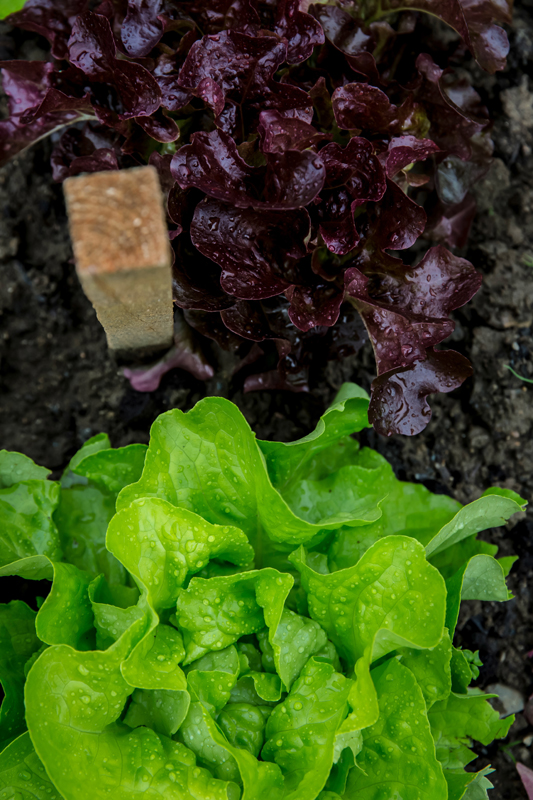Plant in Spring and Again in Summer for Cool Weather Harvests
There are few things more refreshing than a salad of sweet, crisp, spring lettuce fresh from the garden–unless it’s fall lettuce fresh from the garden. Lettuce is easy to grow and a good crop for the beginning gardener. Start growing lettuce with these tips.
Lettuce originated in the areas of the Mediterranean around Turkey, Iran and the Near East. It is still found growing wild all over Europe and in temperate parts of Asia.
The first mention of cultivated lettuce is found in Greek historical records dating to 450 BC. Egyptian tomb paintings depict Cos lettuce as early as 4500 BC. The botanical name for lettuce is Lactuca sativa, which is Latin for “milk sap,” referring to the milky liquid it exudes when cut.
Lettuce is one of the first crops that many beginning gardeners are successful in growing. The secret to successfully growing lettuce is fertile soil, adequate moisture, and cool weather.
Start Seeds Indoors
Start lettuce seeds indoors in spring about three to four weeks before you plan to set them outdoors. It is safe to set out lettuce transplants when daytime temperatures in your location stay above freezing. They can handle a little cold weather, but cover if freezing temperatures are expected. You can also direct seed lettuce; for some reason, lettuce that is direct seeded seems better able to handle cold weather than transplants.
Planting
Plant lettuce seeds in the garden in early to mid-spring as soon as the soil is dry enough to work. Sow seeds right next to each other in rows about a foot apart or plant intensively by broadcasting them. As the seedlings grow, thin to four to six inches apart.
Harvest
As soon as the seedlings are about two inches high, you can start to harvest. One way to thin them is by pulling the largest plants, pinching off and discarding the roots, and eating the succulent young leaves for dinner. The smaller plants are left to grow. If you continue to do this, by the time hot summer weather arrives you will still have small, succulent lettuce plants. Hot weather turns them bitter, but smaller plants seems to stay sweet longer than mature ones.
Transplants
If you’re planting lettuce transplants, plant them about six inches apart in all directions, or four inches apart in rows that are a foot apart. To harvest transplants, pick the large outer leaves of each plant. They will continue to grow and produce new leaves. These larger, more mature plants will turn bitter faster when hot weather arrives than direct seeded lettuce, so be prepared to harvest them all at the first sign of bitterness. They’ll keep for a couple of weeks in plastic bags in the crisper drawer of your refrigerator.
Continuous Supplies
For a continuous supply of either baby seedlings or outer leaves of transplants, make succession plantings every week until late spring. In late summer, direct seed again for a fall crop. Plant summer-planted lettuce seeds for fall harvest twice as deep as spring planted seeds to protect them from the heat of late summer. By the time the seedlings are up and growing, cool fall weather will have arrived.
Lettuce and all salad greens are one of the easiest garden crops to grow. They are all but guaranteed to produce sweet, succulent salad greens if you grow them in the cool weather of spring or fall.
The Author:
Sharon Sweeny is a creative copywriter, specializing in gardening and self-sufficient do-it-yourself lifestyles.
Copyright Sharon Sweeny, 2009. All rights reserved.
